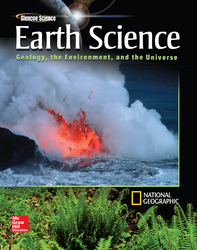1 A) astronomy B) meteorology C) geology D) oceanography 2 <a onClick="window.open('/olcweb/cgi/pluginpop.cgi?it=gif::::/sites/dl/free/0078746361/561672/1_1.gif','popWin', 'width=NaN,height=NaN,resizable,scrollbars');" href="#"><img valign="absmiddle" height="16" width="16" border="0" src="/olcweb/styles/shared/linkicons/image.gif"> (12.0K)</a> A) lithosphere B) hydrosphere C) atmosphere D) biosphere 3 A) law B) hypothesis C) control D) theory 4 A) data analysis B) testing the independent variable C) deciding on a control D) formation of a hypothesis 5 A) 1 x 1008 B) 1 x 100 000 000 C) 1 x 108 D) 1 x 10-8 6 A) 1/1000 m B) 1000 m C) 1/100 m D) 10 m 7 <a onClick="window.open('/olcweb/cgi/pluginpop.cgi?it=gif::::/sites/dl/free/0078746361/561661/aa.GIF','popWin', 'width=NaN,height=NaN,resizable,scrollbars');" href="#"><img valign="absmiddle" height="16" width="16" border="0" src="/olcweb/styles/shared/linkicons/image.gif"> (12.0K)</a> A) 0.03 x 103 B) 3 x 102 C) 3 x 10-2 D) 30 x 10-3 8 A) hydrosphere B) atmosphere C) biosphere D) lithosphere 9 A) theories B) dependent variables C) scientific laws D) experiments 10 A) graph B) model C) law D) theory 11 <a onClick="window.open('/olcweb/cgi/pluginpop.cgi?it=gif::::/sites/dl/free/0078746361/561661/ab.GIF','popWin', 'width=NaN,height=NaN,resizable,scrollbars');" href="#"><img valign="absmiddle" height="16" width="16" border="0" src="/olcweb/styles/shared/linkicons/image.gif"> (3.0K)</a> A) time B) mass C) weight D) product versus time 12 A) geosphere B) atmosphere C) hydrosphere D) biosphere 13 A) newton B) gram C) pound D) ounce 14 A) an oceanographer B) a geologist C) an astronomer D) a meteorologist 15 A) the Kelvin scale B) the absolute zero scale C) the Fahrenheit scale D) the Celsius scale 16 A) g/mL B) cm C) cm3 D) m2 17 A) independent variable B) hypothesis C) dependent variable D) control 18 A) The hypothesis must be reevaluated. B) The experiment was bad. C) The analysis was incorrect. D) The control was not done properly. 19 A) oceanography B) meteorology C) geology D) astronomy 20 A) geology B) biology C) astronomy D) meteorology





